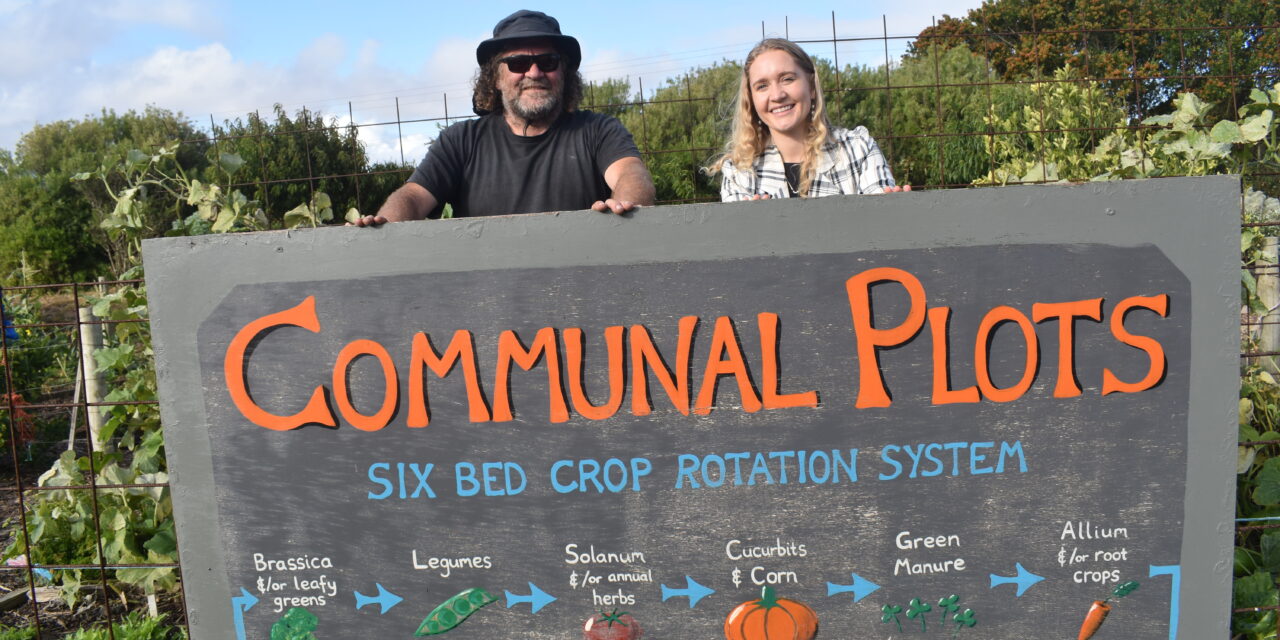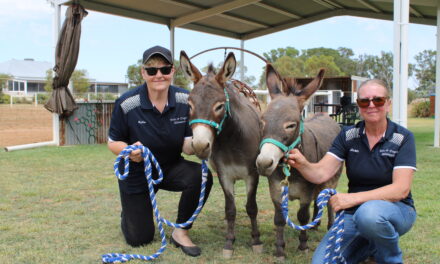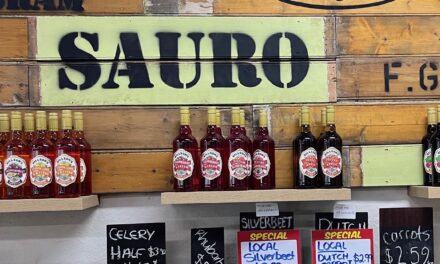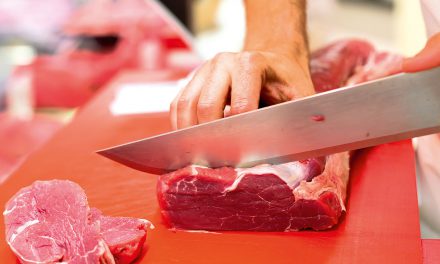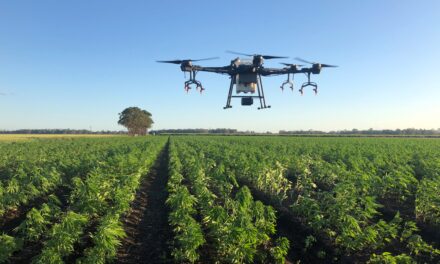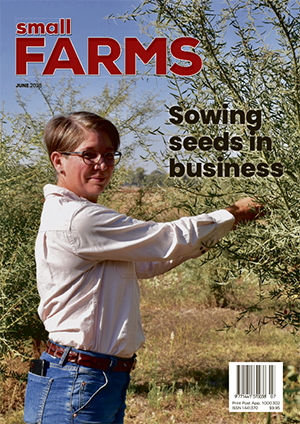Google tells us that a community garden can be urban, suburban or rural. They can grow flowers, vegetables or fruit. And can be one community plot or many individual plots.
They are particularly popular in England and Europe where arable land is at a premium.
Closer to home, Community Gardens Australia is a networking organisation connecting community gardeners around the country. They say the community is “thriving”.
The Warrnambool Community Garden is one such thriving enterprise.
Self-employed builder Dave Mitchell was one of the founders of the garden and for the past three years has been site manager.
Dave was part of initial discussions in 2005 that led to a Warrnambool Community Garden Inc committee being formed the following year and a former quarry site being chosen in 2007 as the new home.
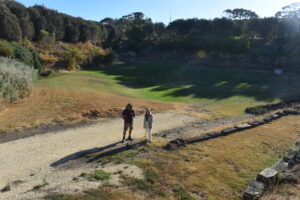
The restored quarry area has hosted one major family fun day that attracted more than 500 people and the committee has plans for more events.
“There were four of us who came up with the idea from a course we were studying together,” Dave said.
“We took it to a public meeting and there was a lot of interest so we set up a committee and took it from there.
“It was about food security and all the things that gardens are good for — especially bringing people together, which is what community is about.
“We wanted a place where people could come and grow their food. Everyone needs to eat but not many people know how to grow food.”
The old quarry site was ideal.
“The city council showed us a few lots but the quarry was perfect,” Dave recalls.
“It wasn’t being used and was fenced off and growing grass and just a home to foxes and blackberries. It was central and close to lower socio-economic areas and houses with smaller plots.”
The initial site was about 0.8 hectares but with the success of the initial plots, the council could see the benefits of the group managing a larger zone, including the abandoned quarry area.
In 2009 work on the site began with swales to control water run-off and the laying of paths, and in 2010 the first garden areas were established with 40 individual plots.
“It was all sandstone and rubble with little topsoil so we had to build up the soil,” Dave said.
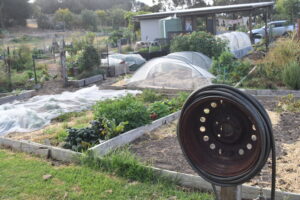
There are 59 private plots rented for $99 a year.
In 2012 the HUB (Healthy Urban Building) officially opened, an old portable classroom converted into a low-energy multi-purpose space for meeting, cooking and collaboration.
That was followed by a pizza oven, compost bays to increase on-site recycling, quarry rehabilitation, development of a weed management plan, introduction of a bush food garden and reflection seat, a shelter and a children’s gardening area added in 2021
Weekly markets were introduced and in 2023 more than 500 people attended a family fun day in the revamped quarry.
The second stage of the quarry redevelopment is under way and there are plans for more big events.
The garden areas are divided into sections. There are now 59 private four square metre plots rented for $99 a year, along with a communal plots zone and an all-abilities garden is being developed near the main entrance that will provide easier access and shelter.
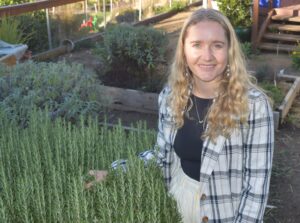
Courtney Mathew found a sense of engagement at the community garden when she returned to live in Warrnambool.
Deputy convenor Courtney Mathew says demand is strong for the private plots, especially in spring when green thumbs start to itch.
“Private plots are often downsizers — people who had bigger properties before,” she said.
A few families bring their kids along and use it as an educational space and some retired farmers have become volunteers and leased a site.
“One great thing about the private plots is that there’s a lot of sharing,” Courtney said.
“They might have extras and give to other members. It engenders a sense of community.”
Communal plots are for people who didn’t have paid individual sites but want to learn and contribute.
They have a six-bed crop rotation system with a lot of the produce grown aimed at the weekly Wednesday markets, while people can also take some home to eat.
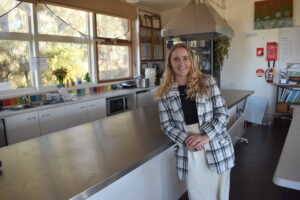
Courtney Mathew in the HUB’s commercial kitchen that can be used for events or making preserves.
Two Saturdays each month there’s a working bee and volunteer lunch. There are also classes, workshops, a worm composting system and a registered kitchen where members can make preserves with excess harvest.
The children’s garden is a space for learning about the different aspects of gardening, growing, weeding, cooking, habitat and finding out where food comes from in the Sprouts Club after school program
Run by volunteer Heather Ryan, the club is targeted at primary age students and is based in a shelter built out of timber recycled from a closed local hotel and a former supermarket at Casterton.
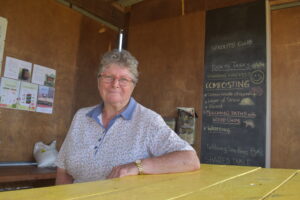
Heather Ryan runs the Sprouts Club for primary school children.
There are more than 20 types of fruit trees on site, including apples, pears, peaches, nectarines, quinces, olives — providing 10s if not 100s of kilos of produce every year.
Some go into preserves; some are sold at market for fresh eating.
The bush food garden was established in 2017 and provides a look at what pre-Colonial food might have been like.
It grows murnong, muntries and salt bush which were once staples of indigenous agriculture in local areas.
The committee has worked closely with local Peek Whurrong Elder Rob Lowe Snr and others in developing the area.
In March it was named Bush Food Garden of the Year in the Community Gardens Australia awards.
This wasn’t the first state or national award won by the Warrnambool Community Garden.
In 2022 they won the Victorian Premier’s Sustainability Award for the quarry redevelopment, and who could forget Dame Eggna being crowned as Australia’s best named chook in the Grow It Local national competition.
The garden draws people from all walks of life.
Courtney joined after moving back to Warrnambool from Japan.
“A lot of my friends had moved away. I was missing the sense of community I had established in Japan and came here and was inspired,” she said.
“At the time I was living in a rental and didn’t really want to invest resources into improving the soil somewhere I wasn’t going to live for a long time, but I could come here and plant things.”
She now has her own home with a garden but remains committed to the community project.
Dave doesn’t have a personal plot, but he doesn’t need one.
“This whole place is my plot,” he said.
“My garden at home isn’t near as big as it used to be.”
Warrnambool Community Garden has more than 100 members, including families and organisations that have plots, and is supported by 30 to 40 volunteers over any given month.
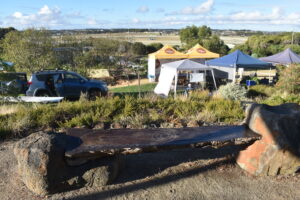
The communal plots provide produce for weekly markets.
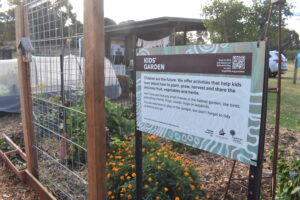
A children’s gardening area was added in 2021.
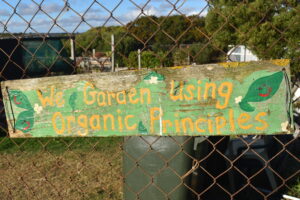
Warrnambool Community Garden.
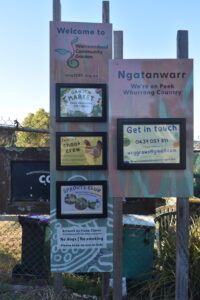
Warrnambool Community Garden.
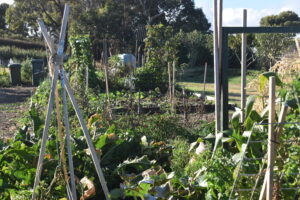
Warrnambool Community Garden
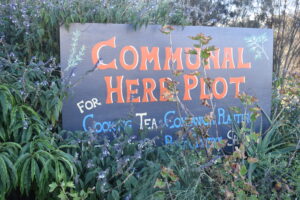
Warrnambool Community Garden
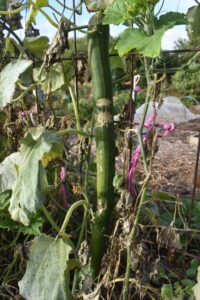
Warrnambool Community Garden.
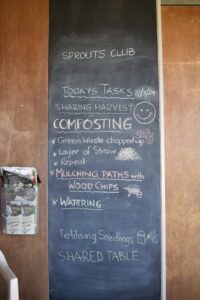
The Sprouts Club after-school program targets primary-age students.
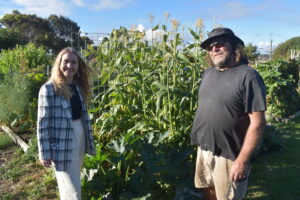
Dave Mitchell and Courtney Mathew help run the Warrnambool Community Garden.

